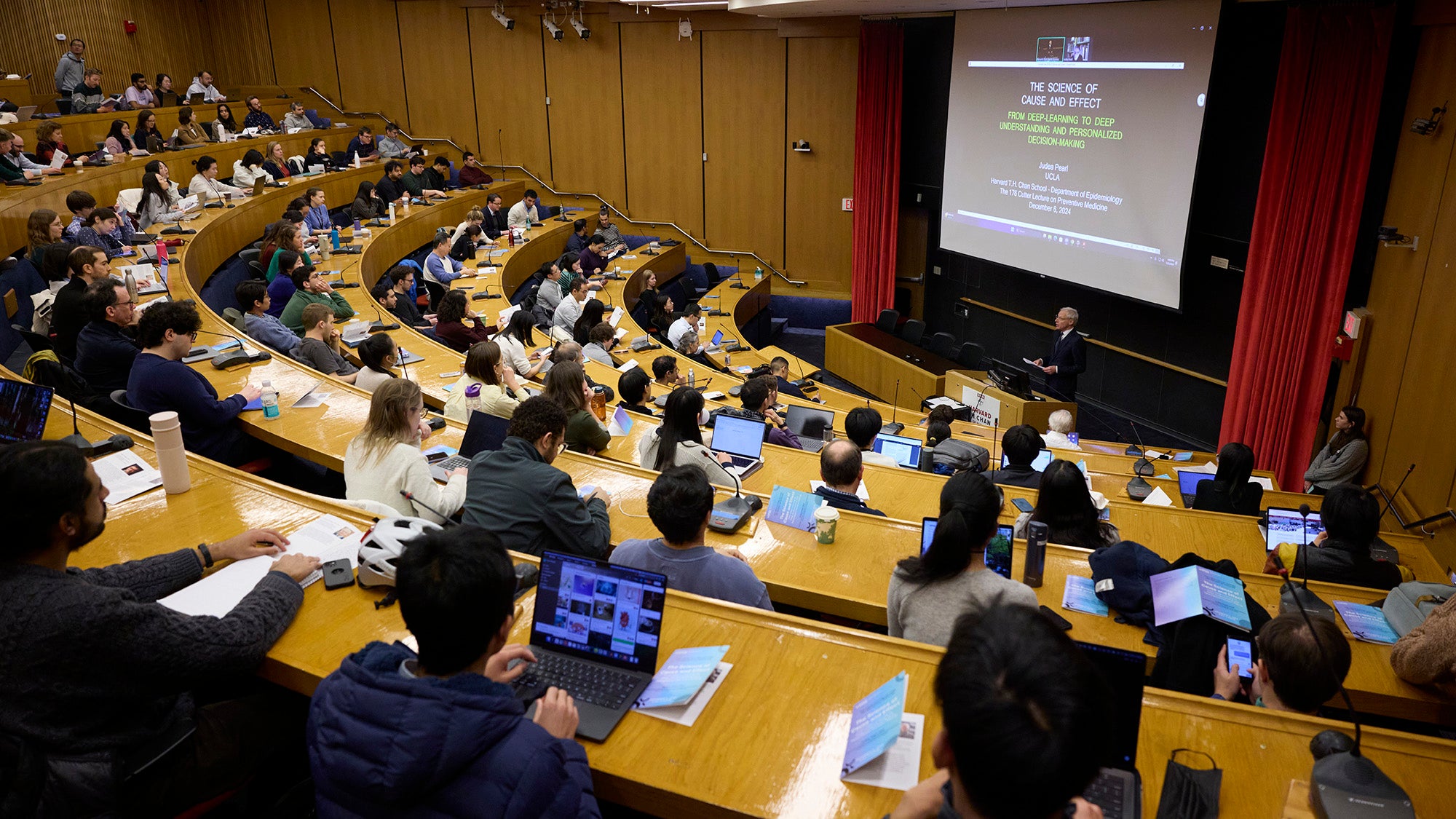Delving into the science of cause and effect

How can epidemiologists answer thorny questions involving causation such as “How effective is a given treatment in preventing a disease?” or “What are the annual health care costs attributed to obesity?”
Determining causes and effects involving complicated issues was the focus of a virtual talk by computer scientist Judea Pearl, an expert in artificial intelligence and causal inference in epidemiology, at the 176th Cutter Lecture on Preventive Medicine, held Dec. 6 in Harvard T.H. Chan School of Public Health’s Snyder Auditorium.
Pearl, a professor of computer science and statistics at UCLA, described a computational model that can help shed light on causal relationships when it comes to difficult questions related to health and health care. He outlined mathematical formulas that can take into account various factors, such as data from diverse sources, missing data, and confounding data, as well as multiple possible scenarios.
Harvard Chan School’s James Robins, Mitchell L. and Robin LaFoley Dong Professor of Epidemiology—also an expert in causal inference—served as a discussant at the lecture. Albert Hofman, chair of the Department of Epidemiology, gave introductions.
The Cutter Lecture on Preventive Medicine is supported by a bequest of John Clarence Cutter, a graduate of Harvard Medical School. It has been held since 1912 under the auspices of the Department of Epidemiology, first as part of Harvard Medical School and then as part of the School of Public Health.


